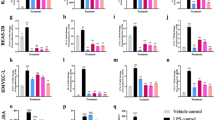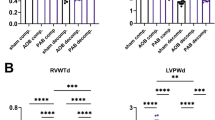Abstract
Aims and objectives
The high morbidity and mortality rates in congenital diaphragmatic hernia (CDH) are attributed primarily to severe lung hypoplasia and/or persistent pulmonary hypertension (PPH). PPH in CDH is characterized by abnormal vascular remodeling with thickening of medial and adventitial layers and extension of smooth muscle into previously nonmuscularized arteries. Excessive proliferation of pulmonary arterial smooth muscle cells (PASMC) is an important contributor to the concentric pulmonary arterial remodeling. An increase in cytosolic-free Ca2+ concentration in PASMC is a major trigger for pulmonary vasoconstriction and a key stimulus for PASMC proliferation and migration. Calcium-sensing receptor (CaSR), a member of the G-protein coupled receptor family, is activated by cations (e.g., Ca2+, Mg2+) and polyamines. Under normal physiological conditions, the expression levels of CaSR in the pulmonary vasculature are very low. Canonical transient receptor potential channels (TRPCs) constitute a series of nonselective cation channels with variable degree of Ca2+ selectivity. TRPC6 has been reported to play a crucial role in the regulation of neo-muscularization, vasoreactivity, and vasomotor tone in the pulmonary vasculature. We hypothesized that CaSR and TRPC6 expression is upregulated in the pulmonary vasculature of nitrofen-induced CDH rats.
Materials and methods
Following ethical approval (REC1103), time-pregnant Sprague Dawley rats received nitrofen or vehicle on gestational day (D) 9. D21 fetuses were divided into CDH and control (n = 12). Quantitative real-time polymerase chain reaction (QRT-PCR), western blotting, and confocal-immunofluorescence microscopy were performed to detect lung gene and protein expression of CaSR and TRPC6.
Results
QRT-PCR and western blot analysis revealed that CaSR and TPRC6 expression was significantly increased in the CDH group compared to controls (p < 0.05). Confocal-immunofluorescence microscopy revealed that CaSR and TRPC6 lung expression was markedly increased in CDH group compared to controls.
Conclusion
Increased CaSR and TRPC6 expression in CDH lung suggests that CaSR interacting with TRPC6 may contribute to abnormal vascular remodeling resulting in pulmonary vasoconstriction and development of PPH.



Similar content being viewed by others
References
Keijzer R, Puri P (2010) Congenital diaphragmatic hernia. Semin Pediatr Surg 19:180–185
Kool H, Mous D, Tibboel D, de Klein A, Rottier RJ (2014) Pulmonary vascular development goes awry in congenital lung abnormalities. Birth Defects Res C Embryo Today 102:343–358
Guignabert C, Tu L, Girerd B, Ricard N, Huertas A, Montani D et al (2015) New molecular targets of pulmonary vascular remodeling in pulmonary arterial hypertension: importance of endothelial communication. Chest 147:529–537
Smith KA, Ayon RJ, Tang H, Makino A, Yuan JX (2016) Calcium-sensing receptor regulates cytosolic [Ca2+] and plays a major role in the development of pulmonary hypertension. Front Physiol 7:517
Weber EW, Han F, Tauseef M, Birnbaumer L, Mehta D, Muller WA (2015) TRPC6 is the endothelial calcium channel that regulates leukocyte transendothelial migration during the inflammatory response. J Exp Med 212:1883–1899
Tang H, Yamamura A, Yamamura H, Song S, Fraidenburg DR, Chen J et al (2016) Pathogenic role of calcium-sensing receptors in the development and progression of pulmonary hypertension. Am J Physiol Lung Cell Mol Physiol 310:L846–L859
Guarino N, Shima H, Puri P (2001) Structural immaturity of the heart in congenital diaphragmatic hernia in rats. J Pediatr Surg 36:770–773
Yu Y, Fantozzi I, Remillard CV, Landsberg JW, Kunichika N, Platoshyn O et al (2004) Enhanced expression of transient receptor potential channels in idiopathic pulmonary arterial hypertension. Proc Natl Acad Sci USA 101:13861–13866
Kuhr FK, Smith KA, Song MY, Levitan I, Yuan JX (2012) New mechanisms of pulmonary arterial hypertension: role of Ca(2)(+) signaling. Am J Physiol Heart Circ Physiol 302:H1546–H1562
Yamamura A, Guo Q, Yamamura H, Zimnicka AM, Pohl NM, Smith KA et al (2012) Enhanced Ca(2+)-sensing receptor function in idiopathic pulmonary arterial hypertension. Circ Res 111:469–481
Author information
Authors and Affiliations
Corresponding author
Ethics declarations
Conflict of interest
The authors declare that they have no conflict of interest.
Rights and permissions
About this article
Cite this article
Nakamura, H., Zimmer, J., Lim, T. et al. Increased CaSR and TRPC6 pulmonary vascular expression in the nitrofen-induced model of congenital diaphragmatic hernia. Pediatr Surg Int 34, 211–215 (2018). https://doi.org/10.1007/s00383-017-4191-3
Accepted:
Published:
Issue Date:
DOI: https://doi.org/10.1007/s00383-017-4191-3




